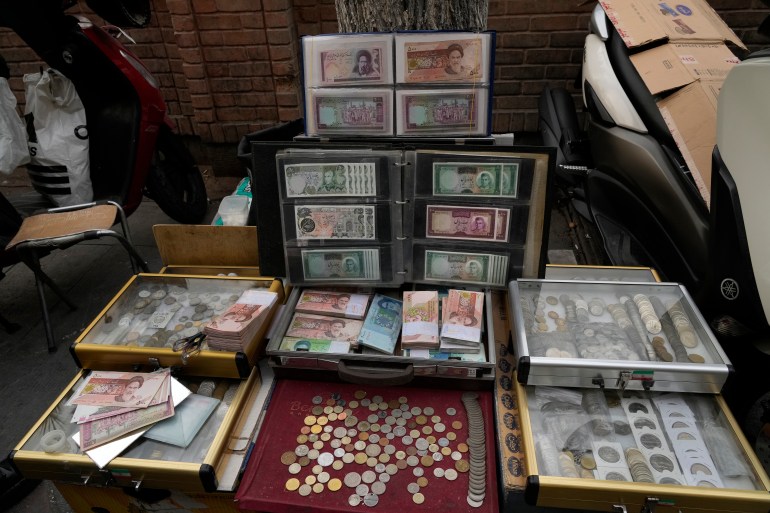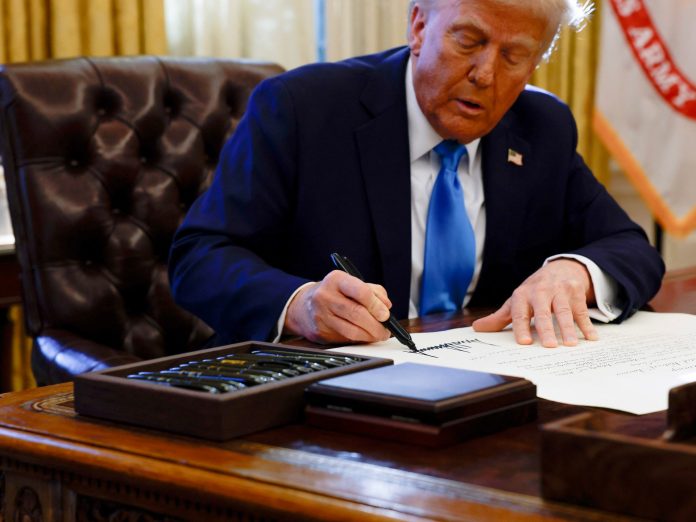Tehran, Iran – United States President Donald Trump has quickly restarted his pressure campaign against Iran while emphasizing he does not want Tehran to have a nuclear weapon.
Iranian authorities have unsurprisingly signaled they do not intend to capitulate, and that the country’s official policy of not pursuing a nuclear bomb remains in place, but they have left room for dialogue.
Let’s take a look at the complex state of play almost seven years after Trump initially embarked on the path of “maximum pressure”, a policy that Tehran maintains has been a failure.
What did Trump say about Iran in the White House?
Trump claimed on Tuesday that he was reluctant – for unstated reasons – to greenlight a new pressure campaign on Iran, but nevertheless promised to drive Iranian oil sanctions to “zero”.
At the same time, he stressed that his only priority is that Iran does not obtain a nuclear weapon.
Asked about alleged Iranian attempts to have him killed in retaliation for ordering the assassination of top general Qassem Soleimani in 2020, Trump said he has left instructions for Iran to be “obliterated” if he himself is taken out.
On Tuesday, the US president signed a national security presidential memorandum to enforce his restored maximum pressure on Iran policy. The memorandum lacked many details on what “maximum pressure” would entail, but Trump hinted that the measures would be tough, saying he was “torn” and “unhappy” about signing it, and adding that he hoped “that it’s not going to have to be used in any great measure at all”.
In May 2018, during his first term in office, Trump unilaterally abandoned Iran’s nuclear deal with world powers that limited Tehran’s nuclear program in exchange for a removal of some sanctions and a suspension of others.
‘Nuclear peace agreement’
In a post on his Truth Social account, the US president said he wants Iran to be a great and successful country, but one without nuclear weapons.
“Reports that the United States, working in conjunction with Israel, is going to blow Iran into smithereens, ARE GREATLY EXAGGERATED,” the post reads.
He also touted a “nuclear peace agreement” that would lead to celebrations across the Middle East.
The Joint Comprehensive Plan of Action (JCPOA), the landmark accord signed between Iran and the P5+1 (US, China, Russia, United Kingdom, France and Germany) in 2015 after years of negotiations, put tough limits on Iran’s nuclear program in exchange for the lifting of United Nations sanctions.
It put a uranium enrichment cap of 3.67 percent on Iran, vastly restricted its stockpile of low-enriched uranium, limited deployment of centrifuges to first-generation IR-1 models, and converted the key Fordow enrichment plant into a research center. It also introduced heavy water and plutonium restrictions, banned new enrichment facilities, and envisioned one of the most stringent nuclear inspection regimes worldwide.
Trump, cheered on by Israel and its Prime Minister Benjamin Netanyahu, unilaterally withdrew from the deal without offering a replacement, and imposed the harshest-ever US sanctions on Iran.
What more pressure can Washington apply?
The sweeping sanctions imposed during Trump’s first term encompassed the entire Iranian economy, and did not let up even during the COVID-19 pandemic, when Iran was hit particularly hard.
Former US President Joe Biden’s administration also piled on the sanctions, but was constantly accused by its Republican rivals of being lax in enforcement as it engaged in indirect talks to revive the JCPOA – which has since remained comatose but not officially dead. A major sunset clause of the accord expires in October this year, stripping the US and the European Union of an ability to quickly bring back United Nations sanctions by activating a “snapback” mechanism of the JCPOA.
The Iranian economy, which was beginning to stabilize after partial relief provided by the nuclear accord, has been thrown into a yearslong turmoil by the sanctions.
Tens of millions of average Iranians continue to see their purchasing power dwindle by the day amid rampant inflation, with the national currency hitting new lows of about 840,000 rials per US dollar in the open market this week. That rate was lower than 40,000 rials per US dollar before the sanctions.







